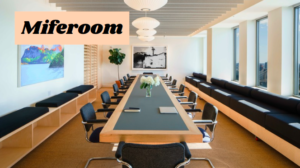Introduction
Mıllıeyt, a term imbued with profound cultural connotations, signifies a rich tapestry of identity, heritage, and artistic expression. Although it may be unfamiliar to many in the United States, understanding milliyet provides a unique lens through which we can explore the interplay of tradition, culture, and modernity.
This article delves into the multifaceted concept of milliyet, examining its origins, significance, and impact on contemporary society and art.
The Origins and Meaning of “Mıllıeyt”
Historical Context
The term milliyet, rooted in Turkish language and culture, translates loosely to “nationality” or “ethnicity.” It encompasses not only the sense of belonging to a particular nation or ethnic group but also the shared values, traditions, and cultural practices that define that group. Historically, milliyet has played a crucial role in the formation of national identity in Turkey and other regions with diverse ethnic compositions.
Cultural Significance
Milliyet is more than just a descriptor of nationality; it is a concept that captures the essence of a group’s collective identity. This includes language, religion, customs, and artistic traditions that have been passed down through generations.
The concept of milliyet emphasizes the importance of preserving these elements as a means of maintaining a group’s distinct identity in an increasingly globalized world.
Milliyet in Artistic Expression
Traditional Art Forms
In many cultures, traditional art forms are a vital expression of milliyet. These include music, dance, visual arts, and crafts that reflect the unique cultural heritage of a community. In Turkey, for instance, traditional folk music and dance are powerful embodiments of milliyet, showcasing the stories, struggles, and triumphs of the Turkish people.
Modern Interpretations
Contemporary artists often draw upon their milliyet to create works that speak to both their heritage and modern experiences. This fusion of traditional and contemporary elements can be seen in various forms of art, including painting, sculpture, and literature. By incorporating aspects of their milliyet into their work, these artists not only preserve their cultural heritage but also adapt it to resonate with contemporary audiences.
Milliyet and Identity in a Globalized World
Challenges of Globalization
In today’s interconnected world, the concept of milliyet faces numerous challenges. Globalization has led to increased cultural exchange and blending, which can sometimes result in the erosion of distinct cultural identities. For many, maintaining a sense of milliyet is a way to resist this homogenization and assert their unique cultural identity.
The Role of Diaspora Communities
Diaspora communities play a significant role in preserving and promoting their milliyet. These communities often serve as cultural hubs, where traditions and customs are kept alive and passed on to future generations. In the United States, Turkish-American communities, for example, celebrate their milliyet through festivals, cultural events, and educational programs.
The Intersection of Milliyet and Politics
Nationalism and Patriotism
Milliyet is closely tied to concepts of nationalism and patriotism. In many countries, the promotion of a strong national identity is seen as essential for social cohesion and unity. However, this can sometimes lead to tensions, particularly in multicultural societies where multiple milliyet identities coexist.
Policies and Legislation
Governments often implement policies and legislation that affect the expression of milliyet. These can range from official recognition of minority languages and cultures to more contentious measures aimed at assimilating minority groups. Understanding these dynamics is crucial for appreciating the complexities of milliyet in different political contexts.
The Future of Milliyet
Preserving Cultural Heritage
As we look to the future, the preservation of milliyet will likely continue to be a priority for many communities. This involves not only safeguarding traditional practices and languages but also finding innovative ways to adapt them to contemporary life. Efforts to document and promote cultural heritage through digital media, for instance, are one way in which milliyet can be preserved and celebrated.
Embracing Diversity
While maintaining a strong sense of milliyet is important, so too is embracing diversity. In a globalized world, the ability to appreciate and respect different cultural identities is essential for fostering mutual understanding and cooperation. By balancing the preservation of milliyet with an openness to cultural exchange, we can build more inclusive and harmonious societies.
FAQs About “Mıllıeyt”
What does “mıllıeyt” mean?
Mıllıeyt is a Turkish term that broadly translates to “nationality” or “ethnicity.” It encompasses the shared cultural heritage, values, traditions, and identity of a particular group.
How is milliyet expressed in art?
Milliyet is expressed in art through traditional music, dance, visual arts, and crafts that reflect a community’s cultural heritage. Contemporary artists also incorporate elements of their milliyet into their work, creating a fusion of traditional and modern expressions.
Why is milliyet important in a globalized world?
Milliyet is important in a globalized world as it helps preserve distinct cultural identities and resist the homogenizing effects of globalization. It allows communities to maintain their unique traditions and values, fostering a sense of belonging and continuity.
How do diaspora communities preserve milliyet?
Diaspora communities preserve milliyet by celebrating cultural traditions, hosting festivals and cultural events, and educating younger generations about their heritage. These communities serve as cultural hubs that keep their milliyet alive and vibrant.
What are some challenges faced by milliyet in contemporary society?
Challenges faced by milliyet in contemporary society include the erosion of cultural identities due to globalization, tensions between different ethnic and national groups, and policies aimed at assimilation. Balancing the preservation of milliyet with the need for social cohesion and inclusivity is a key challenge.
Conclusion
Mıllıeyt, as a concept, offers a rich and nuanced understanding of cultural identity and artistic expression.
By delving into the historical, cultural, and political dimensions of milliyet, we can gain a deeper appreciation for the diverse ways in which communities around the world assert and celebrate their unique identities.
In an era of rapid globalization, maintaining a strong sense of milliyet is essential for preserving cultural heritage and fostering a more inclusive and diverse global society.





















+ There are no comments
Add yours